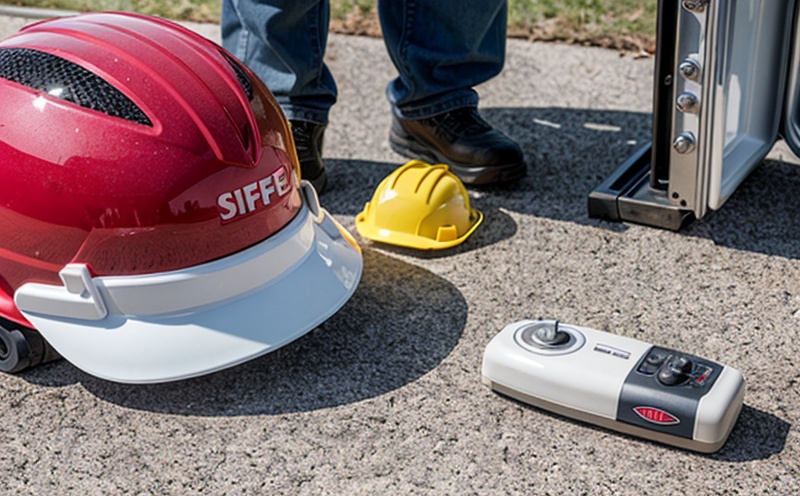ISO 18823 Rescue Boat Launching Appliance Testing
The ISO 18823 standard is a crucial document in ensuring maritime safety and compliance with international regulations. This standard provides the requirements for launching appliances used to deploy rescue boats from ships. These appliances are essential components of life-saving equipment, designed to ensure that crew members can be safely evacuated during emergencies.
Testing these launch appliances involves several stages aimed at verifying their functionality under various operational conditions. The primary goal is to ensure the appliance operates smoothly and reliably in real-world scenarios, which could range from calm seas to severe weather conditions. This testing ensures not only compliance with ISO standards but also enhances overall maritime safety.
The testing process typically includes static load tests, dynamic launch tests, and environmental stress tests. Static load tests verify the structural integrity of the appliance under maximum expected loads. Dynamic launch tests simulate actual deployment scenarios to ensure smooth operation and adequate performance. Environmental stress tests evaluate how the appliance withstands adverse conditions such as high winds, heavy seas, or temperature extremes.
Specimen preparation is a critical step in this process. The rescue boat itself must be properly rigged with all necessary equipment, including life jackets, signaling devices, and communication tools. The launching appliance should also be configured according to the manufacturer's specifications to ensure accurate testing results.
Instrumentation plays a vital role in monitoring and recording test data. High-resolution cameras are used to capture the entire launch process for detailed analysis. Load cells and strain gauges measure forces exerted on key components during dynamic tests. Environmental sensors monitor temperature, humidity, wind speed, and other relevant parameters throughout the environmental stress tests.
The testing procedure is meticulously planned and executed by our experienced technicians who are well-versed in ISO 18823 guidelines. Our state-of-the-art facilities provide an environment that closely mimics real-world conditions, ensuring accurate and reliable test results. Post-testing analysis involves thorough review of all collected data to identify any discrepancies or areas requiring improvement.
Our comprehensive testing services extend beyond mere compliance verification; they offer valuable insights into potential improvements for enhancing safety features. By adhering strictly to ISO 18823 standards, we contribute significantly towards maintaining the highest levels of maritime safety and environmental responsibility.
Applied Standards
- ISO 18823:2015 – Specifications for Rescue Boat Launching Appliances
- ASTM F-1716 - Performance Requirements and Test Methods for Marine Emergency Position Indicating Radio Beacons (EPIRBs)
- IEC 60928 - Safety of electrical equipment for use on ships
International Acceptance and Recognition
The ISO 18823 standard has garnered widespread acceptance across numerous maritime nations. Many countries have adopted this standard as part of their regulatory framework for maritime safety equipment. Compliance with these standards ensures seamless international trade and cooperation.
Recognized authorities around the world, including classification societies and port state control agencies, accept compliance with ISO 18823 as proof of adherence to international maritime safety protocols. This acceptance facilitates smoother interactions between different countries' regulatory bodies, promoting safer global shipping practices.
- Australia
- New Zealand
- United Kingdom
- United States (USCG)
- Norway (DNV GL)
- Singapore
Environmental and Sustainability Contributions
Incorporating ISO 18823 compliant rescue boat launching appliances into vessel design contributes positively to environmental sustainability. Properly functioning launch appliances minimize the risk of accidents, which could otherwise lead to oil spills or other forms of pollution.
By ensuring that all emergency equipment functions optimally, we help prevent unnecessary delays in evacuation and rescue operations. This not only enhances crew safety but also reduces the likelihood of environmental damage resulting from prolonged emergencies at sea.





